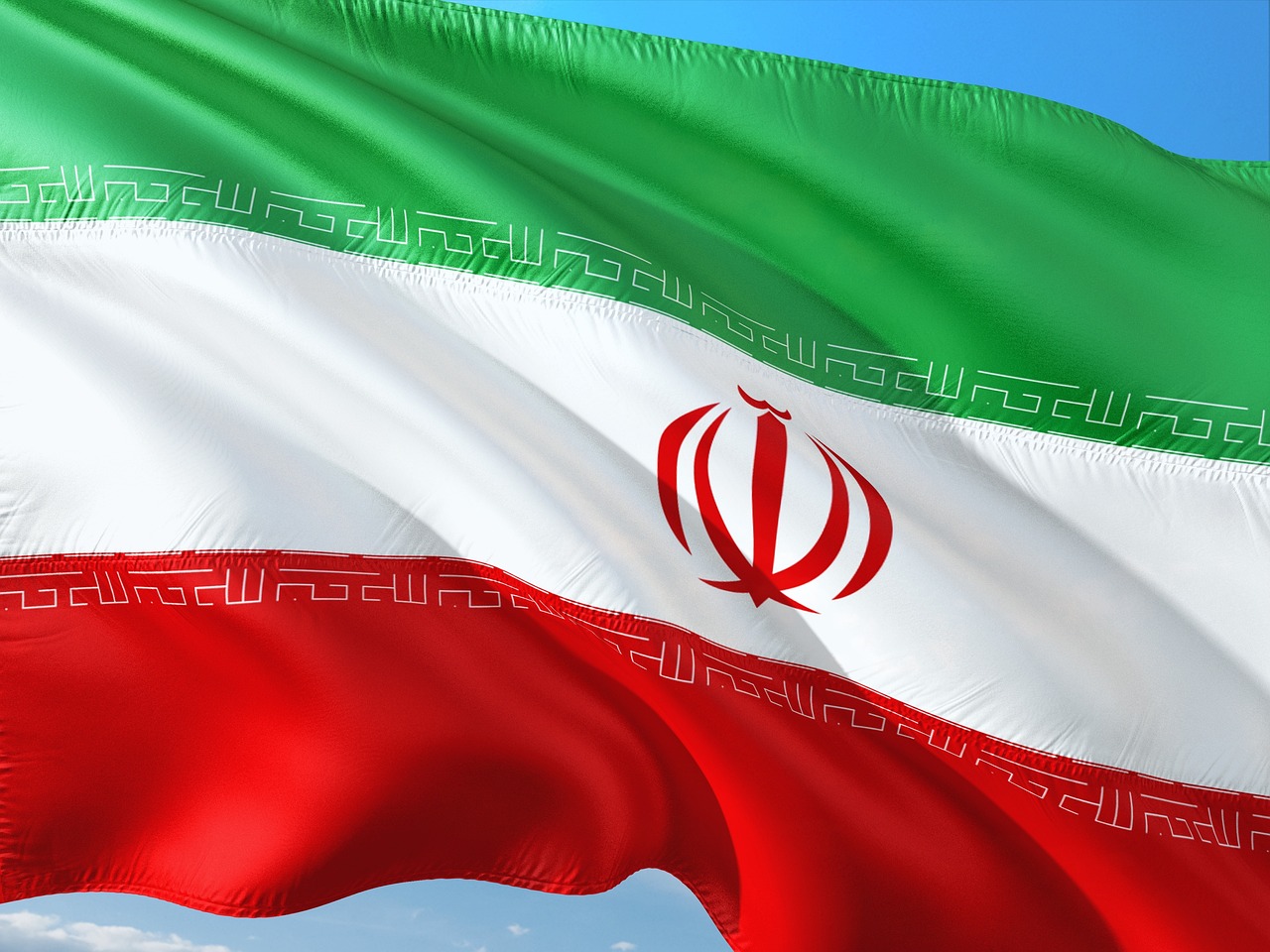Your cart is currently empty!
Inside China’s Information Campaign to Strengthen their Position in the Global South

Posted on :
Chinese Communist Party’s Information Operations Growth in the Global South to Strengthen Global Hegemon
Nathan Weil, February 14th 2024
The information battle is the future avenue through which coalitions can gain or lose support at a whim. A new dichotomy of power is currently brewing between two hegemonic powers. With the increase of BRICS (Brazil, Russia, India, China, South Africa), the continual spinning of facts by foreign affairs ministries, the attempt to increase the North Atlantic Treaty Organization’s (NATO) membership size within the past five to seven years coinciding with more defense treaties like Australia-United Kingdom-United States (AUKUS) has created new friction points in the world. The Global South—generally referred to as the group of what used to be called 3rd world countries–and Western civilization, have been unnecessarily segregated. In this evolving norm, the People’s Republic of China (PRC or China) sees itself as being the self-anointed leader of the Global South, directly contrasting with the United States, which is viewed as the leader of the coalition of Western nations. While being viewed as the contrasting figure of power, world leaders have followed suit to call the PRC out as the existential threat to Western power, with former President Donald Trump claiming in a 2020 address to Congress, “China’s party-state controls the world’s most heavily resourced set of propaganda tools. Beijing communicates its narrative through state-run television, print, radio, and online organizations whose presence is proliferating in the United States and around the world.”1
While the PRC claims they are the leaders of the Global South, they lack critical experience in international leadership. On the other hand, the United States specifically has a proven track record of leadership, demonstrated in World Wars 1 and 2, the Berlin Airlift, the Korean War, the Cold War, and the Global War on Terror, allowing the United States to assume de facto leadership among its coalition of like-minded nations. The PRC has not had the same highly visible opportunities, and their attempts to do so have been viewed as self-interested moves in the interest of only working through monetary and labor transactions rather than the actual full backing of the country[1] [2] . These mechanisms have the net effect of essentially acting as a self-serving member of International Governing Organizations (IGOs) like the United Nations (UN) and Association of South East Asian Nations (ASEAN), “The net effect of these and other efforts [membership in the UN], such as constraining the influence of non-governmental organizations, has been to position China in compliance with self-set priorities and insulate it from serious pressure”.2 Thus, bringing us to Information Operations (IO) being the main catalyst China seeks to use to persuade the Global South to join their power expansion crusade.
Information Operations, as defined in the Joint Publication 3-13, is “ the integrated employment, during military operations, of information-related capabilities in concert with other lines of operation to influence, disrupt, corrupt, or usurp the decision making of adversaries and potential adversaries while protecting our own.”3 Since this definition was written in 2006, the scope of the information realm then, in comparison to now, is seemingly ancient. With the meteoric rise of social media and the global interconnectedness of news, it has created a new avenue of approach for the PRC to influence global populaces and possibly create a facade of leadership and reliability; targeting the countries in the Global South. Providing the PRC with a physical manner of persuasion and a cyber-realm-based one creates a pincer-like situation for susceptible Global South nations.
The CCP’s Goal and Tangible Persuasion
Following the end of the Century of Humiliation and consolidation of the PRC in 1949, the CCP’s (Chinese Communist Party) long-term goal was to re-establish a regional hegemony. Looking at it chronologically, the CCP’s Five Year Plan in the 50s, Deng Xiaoping’s opening of China to the world in the 70s, Economic reform in the 90s and 2000s, and their consistent military reform in the 90s and 2010s, demonstrate their realist–seeking a regional/global hegemon in order to establish security and project absolute power–views. This is vastly important to the CCP due to their inherent belief in leadership, especially within the Southeast Asian sphere of influence, “…They [The PRC] believed they had a natural claim to leadership. They owned it. And their children thought, naturally, they themselves would be, and should be, the future owners [of hegemony].”4
This political and aspirational goal demonstrates the CCP’s intense determination to reestablish regional leadership. This goal of regional hegemony may be a temporary one though. Xi Jinping–who began his CCP Chairmanship in 2013–has expanded the power, control, and goals of the CCP in some ways even more extreme than the communist patriarch Mao Zedong. He views the world as a tool to increase China’s success, which would inflate his power, fulfilling his narcissistic need.
The CCP’s way of gaining incremental power in a monetary manner is through Foreign Direct Investment (FDI), used mainly through the PRC’s colossal Belt and Road Initiative (BRI). The BRI is an international investment plan, defined by the Council on Foreign Relations as:
“[o]ne of the main planks of a bolder Chinese statecraft under Xi, alongside the Made in China 2025 economic development strategy. For Xi, the BRI serves as pushback against the much-touted U.S. “pivot to Asia,” as well as a way for China to develop new trade linkages, cultivate export markets, boost Chinese incomes, and export China’s excess productive capacity.”5
The BRI is the physical way the PRC is seeking to expand its international presence, in response to the U.S.’s own presence and the PRC’s goal of sustaining hegemony. The BRI project allows PRC-controlled and CCP-aligned companies to expand the Chinese footprint far beyond their region, which helps them reach their possible end state of global hegemony; following the completion of their short term goal of regional hegemony. The largest critique of the BRI is it is an unethical business practice and openly a lop-sided agreement. The Council on Foreign Relations states:
“Some BRI investments have involved opaque bidding processes and required the use of Chinese firms. As a result, contractors have inflated costs, leading to canceled projects and political backlash…and in Ghana and Zambia, high debt loads that partly consisted of BRI loans led to sovereign default.”5
CFR’s comments highlight the PRC exploitation of underdeveloped countries in the Global South, knowing their need for infrastructure growth hinges on foreign investment and Western nations have not put nearly as much effort into developing Africa and South Asia, opening a door for China.
So if this poison chalice of a multi-trillion dollar plan is inherently a negative investment for some countries, why do it? Why would countries such as Equatorial Guinea, Cambodia, or Angola take hundreds of billions of dollars in investment capital that could eventually ruin their checkbook? This is simply due to the fact that Western civilization has not offered nearly the same amount of capital as the PRC has, specifically $4.2 billion in Chinese FDI, while the United States has been at $2.1 billion since 20036. These countries are more than willing to drink this brew if it means their countries’ railways, access to the internet, roads, bridges, and import capabilities are expanded; thus, allowing the CCP to push the narrative it is interested in investment projects meant to be advantageous for both parties, rather than a zero-sum game prompting the expansion of CCP interests world-wide. These countries, in return, are more than likely to support CCP motions in the UN, shy away from supporting Taiwan, and are likely to support the removal of the PRC’s oppression of the Uighurs and Tibetan narrative from the international stage. For example, in 2022 Nicaragua joined the BRI only a month after severing ties with Taiwan.5
BRI and Possible Future Conflicts
The CCP’s ability to influence nations to their cause is critical to their force protection within the region and force projection abroad. As we look towards a possible future conflict of a Chinese invasion of Taiwan via a cross-strait invasion, the PRC’s outlook looks dim in regards to 3rd party support. Their current posture requires them to be a one-dimensional coastal force that cannot consistently project power beyond the 1st Island chain. (See below for the Island chain layout in the Indo-Pacific area of operations.)

Figure 1: Island Chains in Pacific Ocean
Their naval fleet, while the largest in the world by tonnage, is not able to project power over large distances, due to a large lack of aircraft carriers and lack of a peer submarine fleet. This allows the United States and probable coalition nations like Japan, Australia, and Vietnam to cut off Sea Lines of Communications (SLOCs) and destroy necessary import capabilities. Considering the vast majority of China’s oil comes from imports, and the vast majority of these oil imports pass through the Straits of Malacca, their ability to engage in a prolonged and sustained conflict against a multinational coalition appears to be less than ideal.
With the CCP looking outwards towards a large obstacle of limited long-term supplies, restricted employment of naval vessels, and an easy-to-define course of action, they have no choice but to be interdependent and strengthen partnerships with outside nations. Using the BRI as a debt trap method–in which the payments get too steep for many nations to pay for, the PRC is willing to absolve all debts to establish international dispositions, as seen in Cambodia, Equatorial Guinea, and Djibouti. The expansion of the BRICS creates an identifiable antithesis to NATO[3] ; the remaining countries and those within BRICS that have little initiative to help the CCP outside of fiscal need to be persuaded otherwise. Additionally, even those staunchly against the CCP’s expansive intentions can be persuaded against kinetic response or deterred through digital information operations[4] .
Information Operations and The Global South
The formation of the Global South has been conducted through a series of anti-colonial sentiments, a large share of global wealth being forged and held in Northern/Western nations, and through continuous abuse by the Western civilization through the 18th-20th century proxy wars and wars of expansion7. While China, since 1949, has not had to deal with the same inequities the Global South has, it has positioned itself as an outsider. As Noemamag states “Across the Global South, fast-growing countries from Bangladesh to Brazil can send raw materials to China and get technological devices in exchange. The idea is that what China is today, they could be tomorrow.” informing those disenfranchised countries there is a way out of continual poverty: the Chinese way. The PRC’s extreme economic growth following the Century of Humiliation mentioned above and Mao Zedong’s totalitarian regime can be spun as a proof of concept, juxtaposed by stating the United States, England, France, Germany, Japan, and South Korea are resource-rich, built upon generations of success at the expense of the Global South. The PRC seeks to prove that near-term change can accelerate growth as long as China is the main partner of trade. The BRI may be the physical tool to do so, but how it is told is more important, and that is through digital monopolization of the information sphere.
IO in the Cyber Realm
The PRC has capitalized on innovations of the technology field, with Huawei, Alibaba, the use of Telegram, and bot networks, to provide the PRC the ability to create and mold the networks of the Global South. With Huawei being the world’s largest provider of 5G cellular networks, Alibaba providing a cloud system used by thousands of companies, and the ability to use bots and Western influencers/bloggers on social media, the CCP has many avenues to influence decision-making within the Global South. The vast majority of South America, over half of Africa, and most of Central Asia all use or will use Huawei’s 5G networks in the near future (See Figure 2).

Figure 2: Huawei International Disposition8
Providing the CCP with possible built-in backdoors to conduct cyber espionage or deny/degrade anti-CCP messaging through shadow banning. Additionally, as the PRC’s technological infrastructure control increases, it will likely serve as a deterrent for Global South nations from pursuing external support, as the infrastructure control will certainly provide the Chinese People’s Liberation Army (PLA) with Signals Intelligence (SIGINT) collection avenues for exploitation. In the full stack–network infrastructure, devices, applications, content, and governance–of information layers, the PRC, likely through its People’s Liberation Army (PLA) Strategic Support Force (SSF) in coordination with state-controlled enterprises, has full exploitation capabilities. For example, in Myanmar, “In the device layer, Chinese companies manufacture more than half the handsets sold in Myanmar and are collaborating with the government to deploy smart city systems, often including facial recognition technology, in the country’s main cities.”9 This ambiguous-type way of infiltration into the Internet of Things (IoT) demonstrates one of the many influence capabilities at the strategic level. Knowingly putting PRC antagonists at risk of persecution, targeting, or enhanced collection that would be considered unethical; such as queuing Human Intelligence (HUMINT) efforts, technical surveillance as possibly demonstrated above, or blackmail.
While cyber-based IO involves the technical degradation of information access that could be exploited, overt IO can be seen through the use of state-aligned officials, social media, and the development of software used to manipulate what the user base sees. The most obvious example being the subversion of western messaging, “Subversion, more commonly referred to in PRC parlance as disintegration work, is the flip side of “friendly” united front and liaison activities. Ideological subversion targets political cohesion of coalitions, societies, and defense establishments.”1 The PRC seeks to employ an international presence of operatives, likely to recruit intelligence assets within national governments to degrade Western influence and increase their own. This is overt in the fact it is part of a greater political strategy, rather than having to use plausibly deniable actions, usually reserved for intelligence agencies and cyber threats.
The Global South provides a plethora of advantages for the CCP, with international ports, critical resources, and added voices on the international stage to undermine anti-CCP criticisms. If the CCP succeeds at maintaining its self-proclaimed leadership of the Global South it will severely hinder Western intentions. The CCP stands to be the antithesis of the United States, therefore, its quest for greater expansion must come at the cost of American international hegemony. Freedom of Navigation operations (FONOPs), trade agreements, the proclivity of the United States Dollar as the trade currency, and the perception the U.S. is the world’s noble mediator and protection provider will likely be severely degraded as a result of these incursions. As the PRC seeks to use state media, the BRI, cyber-realm denial and disruption of information, and overt/covert agents abroad, NATO and allied nations such as Japan, South Korea, and possibly Israel and Turkey, will likely have to attribute greater resources to the Global South. This will likely cause an even greater strain on NATO and other Western allied resources, as the war in Ukraine, and the powder keg of the Middle East has gotten even hotter thanks to the Hamas-led attack on Israel, leading to a near existential threat on current NATO war supply chains.
Assessed Practical Application of IO
The future outlook of the PRC’s IO depends entirely on the economy of the PRC. If the PRC can continue their fiscally unsustainable trend of FDI investments, then they will likely continue to gain greater access to Global South nations’ infrastructure. If they are not able to maintain a high level of economic output, they will likely rely more on information denial and influence operations. As the BRI acts as the carrot and the IO acts as a stick for Global South influence, if the carrot begins to rot, the stick will have to grow and become more effective. Hypothetically, if the PRC can maintain its course on a monetary level and there isn’t a financial crisis in China, they will certainly pursue BRI investment in vulnerable countries in the Western Hemisphere to gain placement and access to infrastructure closer to the United States.
Countries like Ecuador, Cuba, Venezuela, and multiple Central American countries have poor technological and physical infrastructure, and their exploitation could allow for debt-trapping investments to be used for establishing PLA Navy or Air Force dispositions closer to the United States mainland. Providing the PLA with additional assets to threaten U.S. force protection postures and homeland security efforts, disrupting United States Military (USMIL) planning efforts as the threat to the mainland presents massive civilian considerations and would draw away necessary resources from the 1st and 2nd island chains. Additionally, if there was a Global South nation radicalized enough to support the Chinese war effort in a kinetic scenario, third-party intervention could be forced to absolve BRI debt.
Conclusion
The CCP’s IO campaign could elevate the PRC’s international influence immensely. By spinning critical topics such as the legitimacy of Taiwan, the Uighur concentration camps, and BRI intentions, the CCP will be able to deter Western advances to denounce the weak points of the Chinese party-state. China will not be able to win future conflict independently if there is substantial resistance and will heavily lean on the information realm to recruit support from those who do not align with the West and its international coalition of allies. If one were to do a Center of Gravity analysis of the CCP, it would not be an ignorant statement to say their information control is a critical capability for their success. Their control of information not only contains domestic dissention but allows them to extend beyond their region and become an international hegemon, changing the social hierarchy of the past century. Lastly, as the leader of the Global South, the CCP will likely use their information control and cyber capabilities to deter internal dissension within the IGO and possibly use covert cyber efforts to deter threats to their infrastructure controls and debt-trap objectives. Essentially, becoming an oppressive power within their own organization and limiting the offensive realist goals of its peer states.
Works Cited
- Gershaneck, Kerry “To Win without Fighting.” Accessed January 28, 2024. https://www.usmcu.edu/Outreach/Marine-Corps-university-Press/Expeditions-with-MCUP-digital-journal/To-Win-without-Fighting/.
- Clift, Brendan. “Self-interest shapes China’s policies toward the international order | East Asia Forum.” East Asia Forum . December 19, 2017. Accessed January 28, 2024. https://www.eastasiaforum.org/2017/12/19/self-interest-shapes-chinas-policies-toward-the-international-order/.
- CJCS. “JP 3-13.3, Operations Security.” October 19, 2015. Accessed January 28, 2024. https://media.defense.gov/2020/Oct/28/2002524944/-1/-1/0/JP%203-13.3-OPSEC.PDF.
- Osnos, Evan. “Born Red.” The New Yorker. March 30, 2015. Accessed January 28, 2024. https://www.newyorker.com/magazine/2015/04/06/born-red.
- Maizland, Lindsay. “China’s Massive Belt and Road Initiative.” February 2, 2023. Accessed January 28, 2024. https://www.cfr.org/backgrounder/chinas-massive-belt-and-road-initiative.
- Galal, Saifaddin. “Africa: FDI flows from China and the U.S..” Statista. June 19, 2023. Accessed January 28, 2024. https://www.statista.com/statistics/1270433/fdi-flows-from-china-and-the-us-to-africa/.
- August 15, 2023. Accessed January 28, 2024. https://carnegieendowment.org/2023/08/15/term-global-south-is-surging.-it-should-be-retired-pub-90376.
- Maizland, Lindsay. “Is China’s Huawei a Threat to U.S. National Security?.” February 8, 2023. Accessed January 28, 2024. https://www.cfr.org/backgrounder/chinas-huawei-threat-us-national-security.
- Soula, Etienne. “China and the Digital Information Stack in the Global South.” June 15, 2022. Accessed January 28, 2024. https://securingdemocracy.gmfus.org/china-digital-stack/
Want to support KTC another way? Click the icon below to buy a KTC sticker and help fund our programs.

Key Terrain Cyber is dedicated to the professional development of our cyber workforce and information warfare community. We offer all our programs at no cost to readers, including our professional journal, mentorship and fellowship programs, and information warfare memorial. Our team of unpaid volunteers work hard to keep this site running and appreciate any support you are willing to give us.
There are sevearal ways you can help us spark innovation, disseminate good ideas, and remember our fallen. You can donate to KTC via the paypal button or venmo graphic below and help us cover our operating costs. Buying Key Terrain Cyber merchandise from our webstore is another excellent way to show your support for our programs and look good in the process.
Interested in volunteering your time? Contact us at [email protected] if you want to learn more about becoming a volunteer, staff member, or senior fellow. Finally, you can thank our staff by using the button below to buy us a coffee or a beer.







